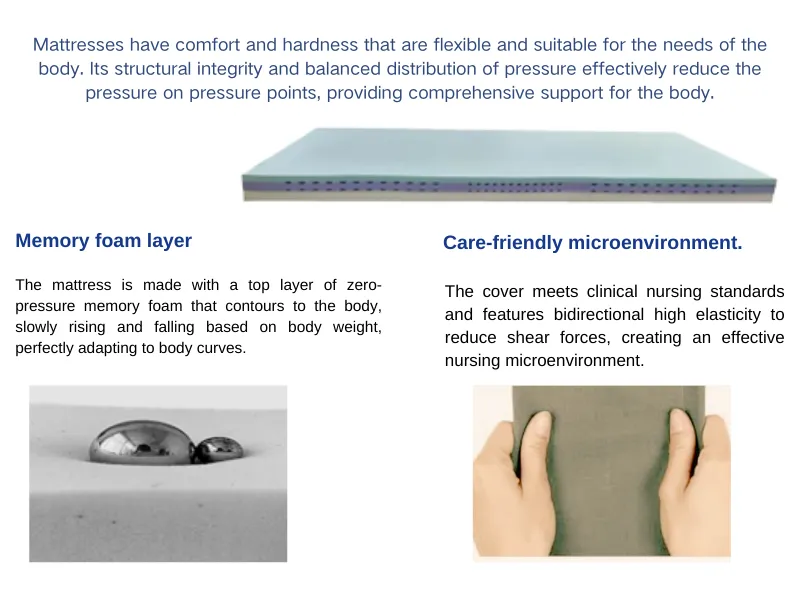Enhancing Care for Pressure Injury Prevention and Management Services
Understanding Pressure Injury Services Prevention and Management
Pressure injuries, also known as pressure ulcers or bedsores, are localized damage to the skin and underlying tissue, often over bony prominences, resulting from pressure, or pressure in combination with shear. These injuries are a significant concern within healthcare settings, particularly for individuals with limited mobility, and they can lead to serious complications if not properly managed. Pressure injury services focus on both prevention and treatment and are essential for improving patient outcomes.
The Importance of Pressure Injury Services
Pressure injury services play a crucial role in healthcare by providing specialized care aimed at preventing and managing these injuries. Effective pressure injury management can significantly enhance a patient’s quality of life, reduce hospital stays, and lower healthcare costs associated with complications from these injuries. The World Health Organization (WHO) underscores that pressure injuries are largely preventable, thereby emphasizing the need for dedicated services and protocols.
Risk Factors
Understanding the risk factors associated with pressure injuries is vital for both prevention and treatment. Common risk factors include immobility, advanced age, poor nutrition, moisture, incontinence, and certain medical conditions such as diabetes and vascular diseases. Patients in critical care settings are particularly vulnerable, making the implementation of a pressure injury prevention protocol essential.
Prevention Strategies
An effective pressure injury service must prioritize prevention strategies. These strategies often involve
1. Risk Assessment Utilizing standardized tools like the Braden Scale to assess each patient’s risk for developing pressure injuries upon admission and regularly thereafter.
2. Skin Care Regular skin assessments and hygiene routines can help maintain skin integrity. Keeping the skin clean and moisturized can prevent breakdown, especially in high-risk areas.
3. Repositioning Establishing a scheduled repositioning routine for immobilized patients is crucial. Changing positions every two hours can relieve pressure and enhance circulation in vulnerable areas.
pressure injury service

4. Support Surfaces Using specialized mattresses and cushions designed to redistribute pressure can significantly reduce the risk of injury. These devices are crucial in the care of high-risk patients.
5. Nutritional Support Malnutrition can impede wound healing and predispose patients to pressure injuries. A dietitian should assess and implement nutritional strategies to ensure adequate caloric and protein intake.
Treatment Approaches
When pressure injuries do occur, prompt and appropriate treatment is essential. Pressure injury services typically employ a multidisciplinary approach, which may include
- Wound Care Management Employing evidence-based dressing techniques to protect wounds, promote healing, and minimize infection risk is a cornerstone of treatment. Advanced wound care products such as hydrocolloids, foams, and alginates can be utilized based on the injury's stage and condition.
- Pain Management Addressing pain is critical, and patients should be regularly assessed for discomfort associated with pressure injuries. Pain relief methods may range from medications to alternative therapies.
- Surgical Intervention In severe cases, surgical intervention may be needed to remove necrotic tissue or close the wound through techniques such as flap reconstruction. This requires careful planning and consideration of the patient’s overall health.
- Education and Training Educating both healthcare staff and patients about pressure injury prevention and management is vital. Regular training sessions can empower caregivers to recognize early signs of pressure injuries and take preventive actions.
Conclusion
In conclusion, pressure injury services are a fundamental component of healthcare, focusing on the prevention and management of pressure injuries. Through a combination of risk assessment, preventive measures, wound care, and rehabilitation strategies, these services can significantly improve patient outcomes and enhance the overall quality of care in healthcare settings. As the healthcare landscape evolves, integrating innovative approaches and technology into pressure injury services will further enhance their effectiveness, ensuring that the vulnerable populations are protected from the complications associated with pressure injuries. Awareness and proactive measures can make a substantial difference in the lives of patients at risk, minimizing the incidence and impact of these injuries.
-
Mattresses Designed for Back Pain ReliefNewsAug.08,2025
-
Innovative Wave Mattresses for Ultimate ComfortNewsAug.08,2025
-
High-Quality Mattresses for Hospital BedsNewsAug.08,2025
-
High-Quality Mattresses for Every NeedNewsAug.08,2025
-
Healthcare Foam Mattress: Sleep Better, Heal FasterNewsAug.08,2025
-
Cube Mattress for Daily ComfortNewsAug.08,2025
-
How Hospital Mattress Choices Directly Impact Patient Comfort and CareNewsAug.05,2025

